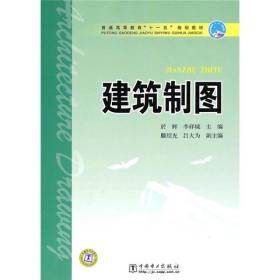
控制网络技术(英文版)
¥ 22.1 4.3折 ¥ 52 全新
仅1件
河北保定
认证卖家担保交易快速发货售后保障
作者李擎、刘艳、李江昀、张维存 著
出版社冶金工业出版社
出版时间2019-03
版次1
装帧平装
货号9787502479572
上书时间2024-12-29
- 在售商品 暂无
- 平均发货时间 27小时
- 好评率 暂无
- 最新上架
商品详情
- 品相描述:全新
图书标准信息
- 作者 李擎、刘艳、李江昀、张维存 著
- 出版社 冶金工业出版社
- 出版时间 2019-03
- 版次 1
- ISBN 9787502479572
- 定价 52.00元
- 装帧 平装
- 开本 16开
- 纸张 胶版纸
- 正文语种 英语
- 丛书 普通高等教育“十三五”规划教材
- 【内容简介】
- 《控制网络技术(英文版)》是将计算机网络与工业控制网络相结合,针对现代工业企业各层次组网和优化问题,提出一揽子理论和实践的解决方案,培养能够适应未来发展需要的高层次、高水平本科毕业生。《控制网络技术(英文版)》的读者对象为高等本科和大专院校在读学生,授课教师以及广大工业企业、研究院所、工程公司的工程技术人员。
- 【目录】
-
1 Introduction
1.1 Enterprise integrated automation system
1.1.1 A layered architecture
1.1.2 Field control system
1.1.3 Process control system
1.1.4 Manufacturing execution system
1.1.5 Enterprise resource planning
1.2 Overview of computer networks
1.2.1 Terminal-oriented computer network
1.2.2 Packet switching network
1.2.3 The function and application of computer network
1.2.4 Open standardized network
1.3 Overview of industrial fieldbus
1.3.1 Control network and field bus
1.3.2 Industrial data communication
1.3.3 Early bus technology
1.3.4 New structure of control system
1.3.5 The advantage of the control system to the network
Problems
2 Data Communication Foundation
2.1 Basic data communication theory
2.1.1 Basic concepts
2.1.2 Fourier analysis
2.1.3 Bandwidth-limited signals
2.1.4 The maximum data rate of a channel
2.2 Signal transmission modes
2.2.1 Band transmission
2.2.2 Serial and parallel transmission
2.2.3 Asynchronous and synchronous transmission
2.2.4 Simplex, half-duplex and full-duplex transmission
2.3 Channel
2.3.1 Channel classification
2.3.2 Main technical indicators of the channel
2.3.3 Modulation
2.4 Data coding
2.4.1 Digital data coding
2.4.2 Analog data coding
2.4.3 Coding techniques
2.4.4 Trunks and multiplexing
2.5 Transmission medium
2.5.1 Magnetic media
2.5.2 Twisted pair
2.5.3 Coaxial Cable
2.5.4 Fiber optics
2.6 Wireless transmission
2.6.1 Radio transmission
2.6.2 Microwave transmission
Problems
3 Computer Network Foundation
3.1 Overview
3.2 Network topology
3.2.1 Star type
3.2.2 Tree type
3.2.3 Bus type
3.2.4 Ring type
3.2.5 Reticulation type
3.3 Computer network hardware
3.3.1 The classification of computer network
3.3.2 Classification by transmission technology
3.3.3 Classification by network scale
3.3.4 Wireless networks
3.4 Computer network software
3.4.1 The necessity of protocol and hierarchies
3.4.2 Five-layer protocol architecture
3.4.3 Architecture of TCP/IP
3.4.4 Entities, protocols, services, and service access points
3.5 The composition of the Internet
3.5.1 The edge part of the Internet
3.5.2 The core part of the Internet
3.6 The indexes of computer networks
3.6.1 Rate
3.6.2 Bandwidth
3.6.3 Throughput
3.6.4 Delay
3.6.5 Bandwidth delay product
Problems
4 The Data Link Layer
4.1 Data link layer design issues
4.1.1 Services provided to the network layer
4.1.2 Framing
4.1.3 Error control
4.1.4 Flow control
4.2 Error detection and correction
4.2.1 Methods to deal with errors
4.2.2 Parity check
4.2.3 Cyclic redundancy check
4.3 Elementary data link protocols
4.3.1 An unrestricted simplex protocol
4.3.2 A simplex stop-and-wait protocol
4.3.3 A simplex protocol for a noisy channel
4.4 Sliding window protocols
4.4.1 A one bit sliding window protocol
4.4.2 Go-back-N ARQ
4.4.3 Selective Repeat ARQ
4.5 Example data link protocols
4.5.1 HDLC——high-level data link control
4.5.2 The data link layer in the Internet
Problems
5 The Medium Access Control Sublayer
5.1 The channel allocation problem
5.1.1 Static and dynamic channel allocation
5.1.2 LAN technology
5.2 Multiple access protocols
5.2.1 ALOHA
5.2.2 Carrier sense multiple access protocols
5.3 IEEE standard 802 for tANs and MANs
5.3.1 IEEE standard 802.3 and ethernet
5.3.2 IEEE standard 802.5 : token ring
5.3.3 IEEE standard 802.4 : token bus
5.3.4 IEEE standard 802.2 : logical link control
5.4 Bridge
5.4.1 Repeater
5.4.2 Hub
5.4.3 Bridges
……
点击展开
点击收起
相关推荐
— 没有更多了 —


















以下为对购买帮助不大的评价